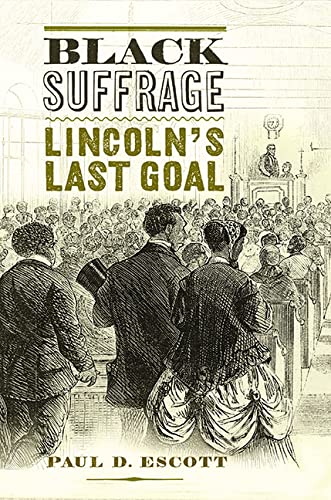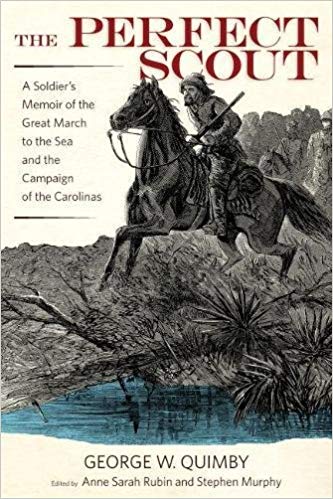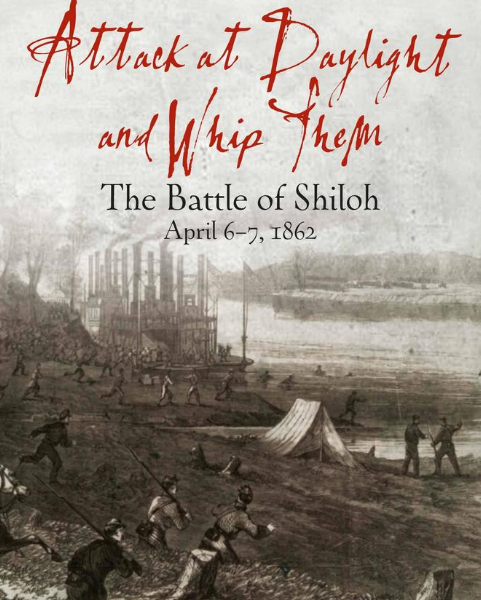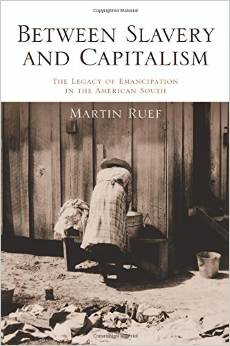Paul Escott’s Black Suffrage focuses on Northern attitudes towards Black rights in the immediate aftermath of the Civil War. As most other studies of this subject focus on other time periods during the war or after it, Escott concentrates on the crucial stage between the Confederate surrender and the end of 1865. Rather than highlight what the war achieved in emancipation, he examines what it did not settle—what U.S. victory meant for Southern rebels, and what it meant for Black rights throughout the nation. Seamlessly picking up where his last work on Northern racism during the war left off, Escott is sensitive to the region’s deep commitment to white supremacy and concludes that racism, combined with feelings of fraternity towards Southern whites, ensured that debates over Black rights remained unsettled by the end of 1865. Nevertheless, as Escott’s close examination of newspapers shows, the Republican Party was becoming increasingly egalitarian in its ideas, accepting the need for Black suffrage on principle or as a means to secure U.S. victory.
Escott takes a largely chronological approach to this study, moving forward through 1865 while focusing on particular themes within individual chapters. He meticulously addresses the ways Republican and Democratic newspaper editors and politicians tackled debates over Black suffrage; President Andrew Johnson’s Reconstruction plan; and the role of white abolitionists and Black leaders, who mobilized to ensure that the question of Black suffrage would not fade. Consistently, Escott concludes, although Abraham Lincoln’s April 11 speech made clear his belief that both reconciliation and Black suffrage were possible, Republicans and Democrats alike saw the two as paradoxical. In their fight against Black suffrage, Northern Democrats, then, maintained a united front that “stressed white supremacy, scurrilous racism, predictions of social equality and social degradation, states’ rights, and a renewal of friendship with southern whites” (113). Taking a harder stance towards rebellious former Confederates, Republicans were more divided until the end of the year. Some of them supported Black suffrage on principle, in recognition of Black service during the war—or as an acknowledgement of American ideals. Facing a racist Northern public, which was bitter over the war and Abraham Lincoln’s assassination, most Republicans were more concerned about Northern interests and safeguarding the Union. Although they were slow to break with him, President Andrew Johnson’s soft handling of former Confederates and his confusing statements regarding Black rights also stymied progress towards a more egalitarian society. Nevertheless, he helped propel the Republican Party towards a greater commitment to Black suffrage.
One of Escott’s strengths throughout the book is his sensitivity to the range of events that electrified the Northern public in 1865. His focus on newspapers, magazines, and public speeches shows that returning U.S. veterans, the execution of the four conspirators in Lincoln’s assassination, excitement over the development of the Atlantic Cable, reports of oil, Jamaica’s Morant Bay Rebellion, and the execution of Henry Wirz for Andersonville all had bearing on the debate over Black suffrage. Escott also rightly points out that Northerners, exhausted by four years of war, desired a return to normal life. They were invested in seeing Reconstruction succeed, but less willing even to vote on the question of Black suffrage—let alone fight for it. Where future studies can build, however, is on this aspect of Escott’s work. Pushing beyond newspapers and into the private aspects of Northerners’ lives would provide a more nuanced examination of daily life and how social concerns drew attention away from Black suffrage. The desire for U.S. pensions, assistance and prosthetics for maimed veterans, and care for orphans seem likely focal points.
Still, Escott’s work is crucial to helping understand not only the failures of 1865, but also the journey towards the passage of the 15th Amendment. Although private and global issues sometimes drew public attention, Northern white abolitionists and Black people in both regions also mobilized by organizing conventions, groups like the Equal Rights League, and writing petitions. In direct opposition to Democratic arguments, these actions provided definitive proof that Black freedmen in the South were qualified for the franchise and that this fight would not disappear. Because freedmen also lacked power, however, just as important was the growing sense, based on Republican newspapers’ reporting of events in the South, that Johnson’s policy was not quelling rebellion or safeguarding emancipation. Black suffrage became an answer to both problems. Black Suffrage should interest any scholar of the Civil War era or civil rights.
Ruth White is a Ph.D. Candidate in the Department of History at the University of Kentucky.
Related topics: African Americans





